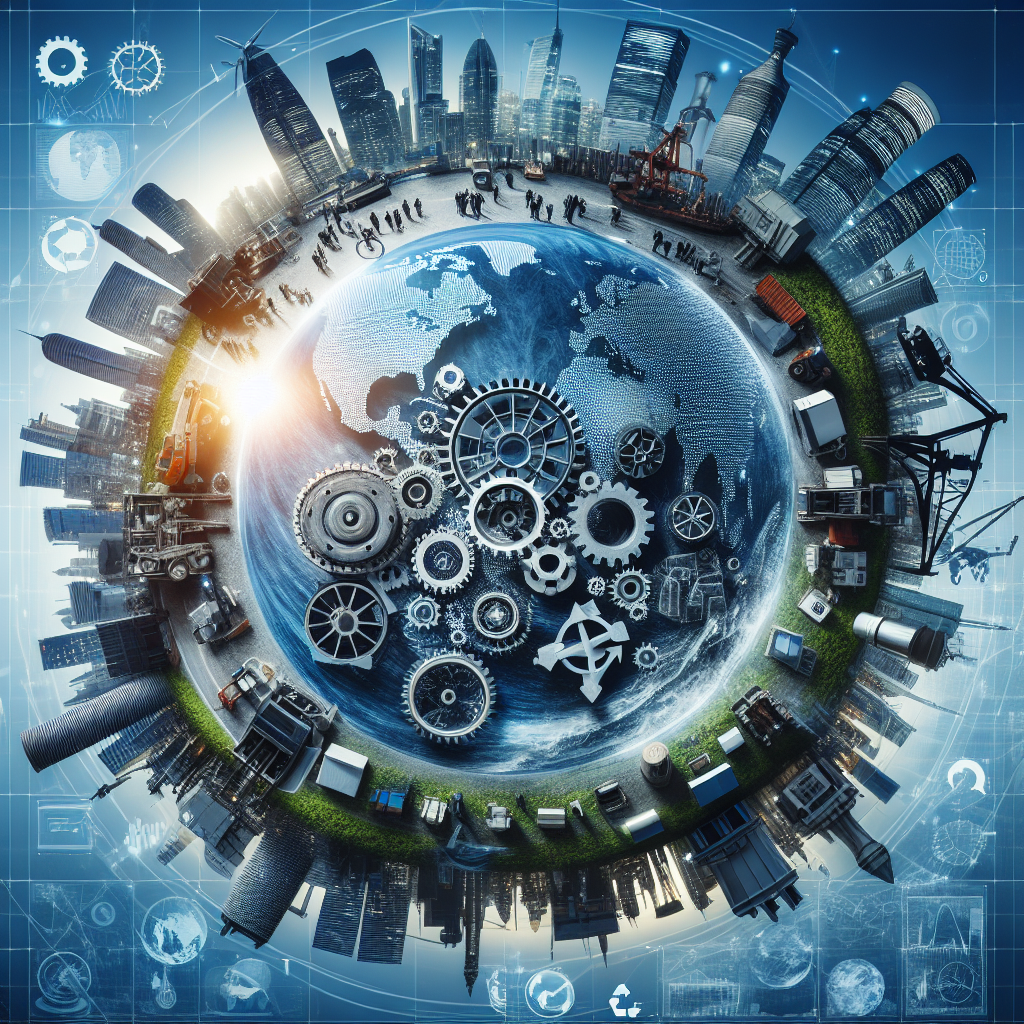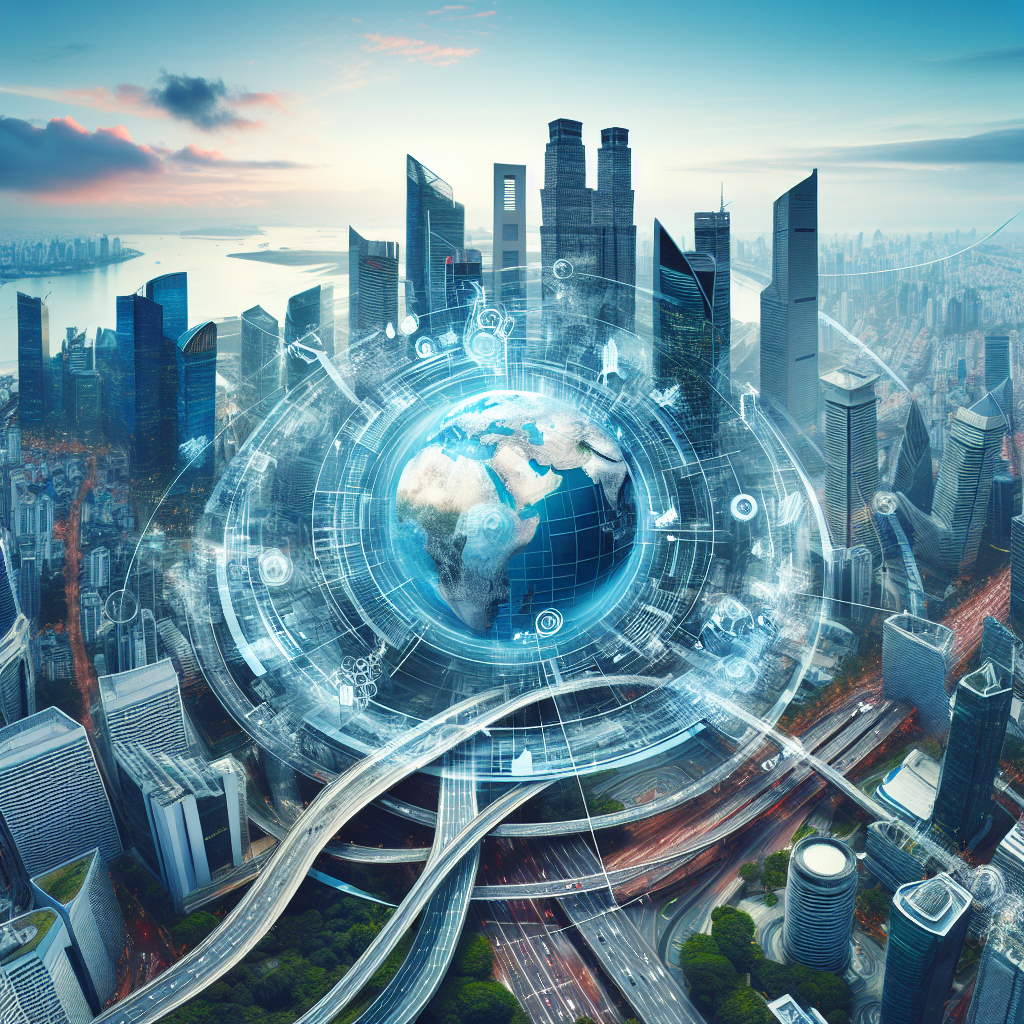The circular economy represents a systemic disruption that is viewed both ecologically and economically and serves to create a more sustainable future. It offers an alternative perspective to the traditional linear economy and aims to achieve a closed loop of production and consumption in order to minimise waste, reduce the use of natural resources and thereby lower carbon emissions. This is a global perspective that must be embraced by all countries, especially developing countries.
However, the implementation of the circular economy comes with certain challenges and difficulties that need to be addressed. These include the efficient management of global waste volumes and recycling, the consideration of guidelines and standards for a global circular economy, environmental and climate change issues, the promotion of technology and innovation, and the adoption of appropriate economic policies and economic incentives.
You have chosen the right article to understand the global perspectives and challenges of the circular economy. Here you will learn about the need, implications and possible solutions related to the implementation of a circular economy on a global scale. Get ready to dive deeper into the world of the circular economy and understand the key aspects that can make our future more sustainable.
Global demand and capacity of the circular economy
To understand the circular economy and its global demand and capacity, it is important to get a clear picture of the current global demand for resources and how this can be met by implementing an efficient circular economy.
In today’s world, the global population is faced with a rapidly growing demand for resources to improve living standards and quality of life. This includes various aspects such as food, shelter, energy, transport and many other goods and services that depend on the natural resources that our planet has.
On the other hand, the capacity of our planet to provide these resources and absorb the waste generated is limited. This is where the circular economy approach comes into play.
The circular economy aims not only to reduce the volume of waste but also to utilise waste in such a way that it can be used as raw material for new products and production processes. Circular economy implies a regenerative economy in which resources are used and reused in an endless cycle. It ensures that no resources are wasted and consumption is reduced to what is necessary.
To meet the global demand for resources and reduce the significant pressure on our natural resources, it is important to increase the capacity of the circular economy worldwide. This requires, among other things, technological innovation, legislative change and the awareness and active participation of individuals, businesses and governments.
Implementation of circular economy in developing countries

Realising a fully circular economy in developing countries is a complex task, but also one with enormous potential for economic and environmental improvements.
In contrast to developed countries, which are already able to implement high waste management standards, developing countries often still have a long way to go. They lack the necessary infrastructure, technical knowledge and legal regulations to effectively implement a circular economy.
However, there are various approaches you can take to overcome these challenges. Firstly, it is important to improve public awareness of the circular economy. With information and awareness-raising campaigns, you can increase people’s awareness of the benefits of the circular economy and motivate them to reduce their consumption and waste production.
On the other hand, you should promote the development of legal frameworks that encourage recycling and penalise the unsustainable consumption of resources. Investment in the necessary infrastructure, such as recycling facilities and waste collection systems, is also key.
In addition, it is important that you build partnerships and collaborations with developed countries and international organisations. These can provide technical knowledge and financial support to enable the implementation of the circular economy.
By successfully overcoming these challenges, you can shape a more sustainable and economically stronger future for your developing countries.
Dealing with global waste volumes and recycling
The global amount of waste is constantly growing and represents one of the greatest challenges of our time. However, this challenge can also be seen as an opportunity, both for the environment and for economic development. As you may know, the main goal of the circular economy is to minimise waste and use resources as efficiently as possible.
Recycling plays a crucial role in managing this waste. It allows us to reuse valuable resources and reduce the volume of waste that needs to be disposed of. The possibilities for recycling are immense: metals can be melted down and made into new products, glass can be melted down and remoulded and many plastics can be recycled and used to make new products.
You may be asking yourself: „How can I contribute?“ An important first step is to become aware of the impact of our consumer behaviour. By shopping consciously and avoiding single-use products, we can significantly reduce the amount of waste we produce. By separating our waste correctly, we can recycle it more efficiently. We can also support the circular economy by making conscious choices, such as choosing products made from recycled materials.
Change on a global scale can be overwhelming, but every step we take to reduce our personal waste output and every support we give to the recycling industry helps to manage global waste volumes and brings us one step closer to the vision of an efficient circular economy.
The impact of the circular economy on resource conservation
The circular economy has a significant impact on resource conservation. It aims to minimise waste and maximise resources in the production chain. This is achieved through various processes such as recycling, reuse, repair and remanufacturing. To achieve this, less emphasis is placed on new production and more on remanufacturing.
You’re probably wondering how exactly this works? Simply put, it’s about keeping materials and products in the economic cycle for as long as possible. Instead of creating waste, the circular economy seeks to utilise and reuse existing resources. This leads to a drastic reduction in waste and a more economical use of natural resources.
Another positive aspect of the circular economy is that it reduces the pressure on the environment. This is because the efficient utilisation of resources also reduces the need for new extraction, which means that fewer raw materials are extracted and less energy is consumed. This in turn helps to reduce CO2 emissions and contributes to the fight against climate change.
To summarise, the circular economy helps us to preserve our planet for future generations by helping to reduce resource consumption and adopting more environmentally friendly production methods. You too can contribute to this goal, for example by buying or selling used products, avoiding unnecessary consumption and separating waste through correct recycling. This makes you an active part of the solution!
Guidelines and standards for a global circular economy
In order to establish a functioning and efficient global circular economy, clear guidelines and standards are essential. These framework conditions define which materials are recyclable, how products can be designed for a longer service life and how waste volumes can be reduced.
International organisations such as the European Commission and the Organisation for Economic Co-operation and Development (OECD) are constantly working on updating and harmonising these standards. In recent years, attention has increasingly focussed on waste prevention and product reuse, not just recycling.
You will notice that the requirements for products and processes in a circular economy are strict. This is because we can no longer afford to waste resources. Products must be designed from the outset so that they can be reused, repaired and recycled.
At the same time, companies must be able to succeed in such an economy. That’s why the guidelines and standards are also designed to create a favourable business environment that encourages innovation and sustainable growth.
However, we are not there yet. There are still many challenges to overcome and improvements to be made. You – as part of society – have an important role to play in supporting these efforts and realising a functioning global circular economy.
Environmental aspects and climate change in the circular economy
Environmental aspects and climate change play an important role in the circular economy. The basic idea of this economic model is to keep resources in the cycle for as long as possible. This means that products and materials are reused, repaired, refurbished and recycled in order to minimise waste and environmental pollution.
By implementing these practices, you are making an important contribution to climate protection. By reusing and recycling materials, less energy is required for the production of new products. This leads to a reduction in CO2 emissions, which are known to be one of the main causes of global climate change.
In addition, the circular economy helps to conserve our natural resources. As we live in a world with limited resources, this is a crucial factor in protecting our environment.
So, by embracing the circular economy and implementing its principles in your living or working environment, you are not only helping to solve the waste problem, but also to protect the climate. Every step counts and helps to preserve our environment for future generations.
Technology and innovation for a more efficient circular economy
Technology and innovation play a crucial role in promoting a more efficient circular economy. By using modern technology, we can collect, sort and recycle waste more efficiently. Technology can also help us to reduce waste by enabling us to design products that are more durable and easier to repair.
Innovation is equally important. New business models, such as product-as-a-service models, where you no longer buy a product but use it, can help reduce the discarding of products at the end of their life. In addition, innovative solutions can help raise awareness of the benefits of the circular economy and encourage businesses and consumers to adopt more sustainable practices.
However, there are always technological challenges in implementing the circular economy. Some materials are difficult to recycle and the use of technology can be costly. Therefore, it is important to invest in research and development to develop cost-efficient and highly effective recycling technologies.
To fully realise the benefits of technology and innovation for the circular economy, we need to create the right framework conditions. This means introducing appropriate policies and incentives to promote the use of technology and innovation in the circular economy.
Economic policy and economic stimulus to promote the circular economy
The promotion of the circular economy is closely linked to economic policy. Government intervention is also necessary here in order to provide the right economic impetus and encourage companies to switch to more sustainable business models. Economic policy can help to facilitate the transition to a circular economy, particularly in the form of subsidies, tax incentives and financial aid.
You should consider that governments often support the development and implementation of technologies that facilitate the transition to a circular economy. This can include promoting research and development in the areas of recycling and waste processing, but also supporting start-ups and companies that offer innovative solutions for waste management and the use of secondary raw materials.
It is also important to understand that an effective economic policy to promote the circular economy also has a regulatory dimension. This means that regulations and standards must be set to achieve sustainable production and consumption. Stricter environmental standards, product stewardship and extended producer responsibility are all measures that can help to create a real economic incentive for business to move to a circular model.
Last but not least, the role of education and awareness should not be underestimated. Raising awareness of the importance and benefits of a circular economy is a key factor in getting both consumers and businesses to participate more actively in the transition.

